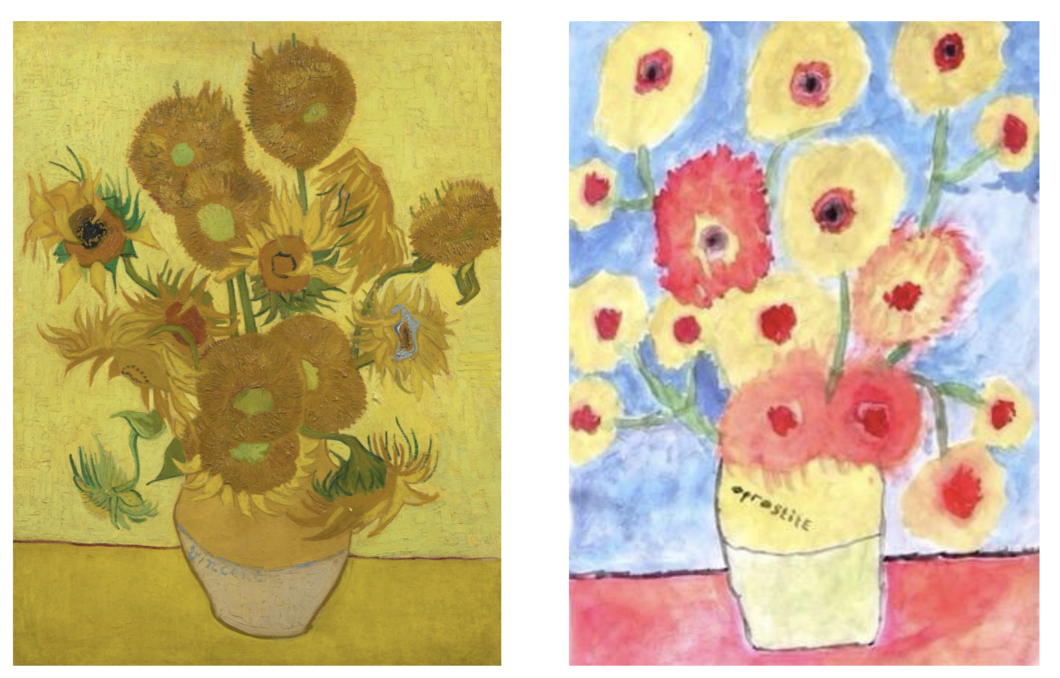25/05/23
‘Sunflowers’ by Dutch artist Vincent Van Gogh, is one of the world’s most recognisable works of art. Coach John relates the role the painting has played in his life and how he saved it from being destroyed.
Click HERE to download the Weekly English Practice as a PDF.
Useful Vocabulary
the (Big) Smoke: a name for London, used especially by northerners
days off: days when you are not working
drawn towards: attracted to something or someone
reluctant: marked by hesitation or slowness because of unwillingness
stretched out: extended to a greater or the full length
to grab: to seize suddenly, eagerly, or roughly
in one fell swoop: with a single, quick action or effort
to dangle: to hang or swing loosely
Listen to the audio and read the text.
The Day I Saved Van Gogh’s Sunflowers
I lived in ‘the Smoke’ for about 10 years, so I had access to Sunflowers whenever I wanted for free. I used to go to the National Gallery in Trafalgar Square, London, at weekends and on days off to learn about art. I appreciated the other Dutch Masters, Picasso, and Da Vinci’s ‘Cartoon’, but was always drawn towards Van Gogh’s masterpiece.
Van Gogh’s paintings of Sunflowers are among his most famous. He did them in Arles, in the south of France, in 1888 and 1889. Vincent painted a total of five large canvases with sunflowers in a vase, with three shades of yellow “and nothing else”. In this way, he demonstrated that it was possible to create an image with numerous variations of a single colour, without any loss of eloquence.
The sunflower paintings had a special significance for Van Gogh: they communicated “gratitude”, he wrote. He hung the first two in the room of his friend, the painter Paul Gauguin, who came to live with him for a while in the Yellow House. Gauguin was impressed by the sunflowers, which he thought were “completely Vincent”. Van Gogh had already painted a new version during his friend’s stay and Gauguin later asked for one as a gift, which Vincent was reluctant to give him.
I used to lose myself in thought standing in front of the canvas. Sunflowers became a motif for me, representing, happiness, optimism (sunflowers always look on the bright side towards the sun!) and of course love. Today I have a ‘Eguzkilorea’ above my front door.
One of life’s joys is to take my bike and ride around Alava, looking for fields of Sunflowers. Despite the winter and dark months, Sunflowers always turn up in the summer, showing us there is always hope. As the Swedish socialist Joe Hill said: “Who knows what may lie around the next corner? There may be a window somewhere ahead. It may look out on a field of sunflowers”.
About 10 years ago, I was in London and had arranged to meet my youngest sister in front of Sunflowers in the National Gallery. As I approached, I could see one of her sons getting excited. I saw him running towards the canvas, with a pencil in his hand. He seemed determined to make ‘improvements’ to the work of art. I stretched out my arm, grabbed his collar and lifted him off the ground in one fell swoop. His legs were dangling in the air as a security guard came up to us and said simply; “I think it’s better if you left!”
Vincent knew that his sunflower paintings were special, as did other people. After he died, friends brought sunflowers with them to his funeral. Sunflowers became synonymous with Vincent, just as he had hoped.
by ECP coach John Hird
Let’s chat about that
- Give a summary of the text to your coach and/or classmates.
- What is a nickname for London? Do you know other cities which have nicknames?
- Where did Vincent paint his Sunflowers and how many did he do?
- What did Sunflowers signify to Vincent? And to John now?
- How did John ‘save’ Sunflowers? Retell his anecdote.
- Read ‘Sunflower Facts’ on p2. Which facts are interesting to you?
- Read the poem on p2 and follow the link for an explanation of it.

